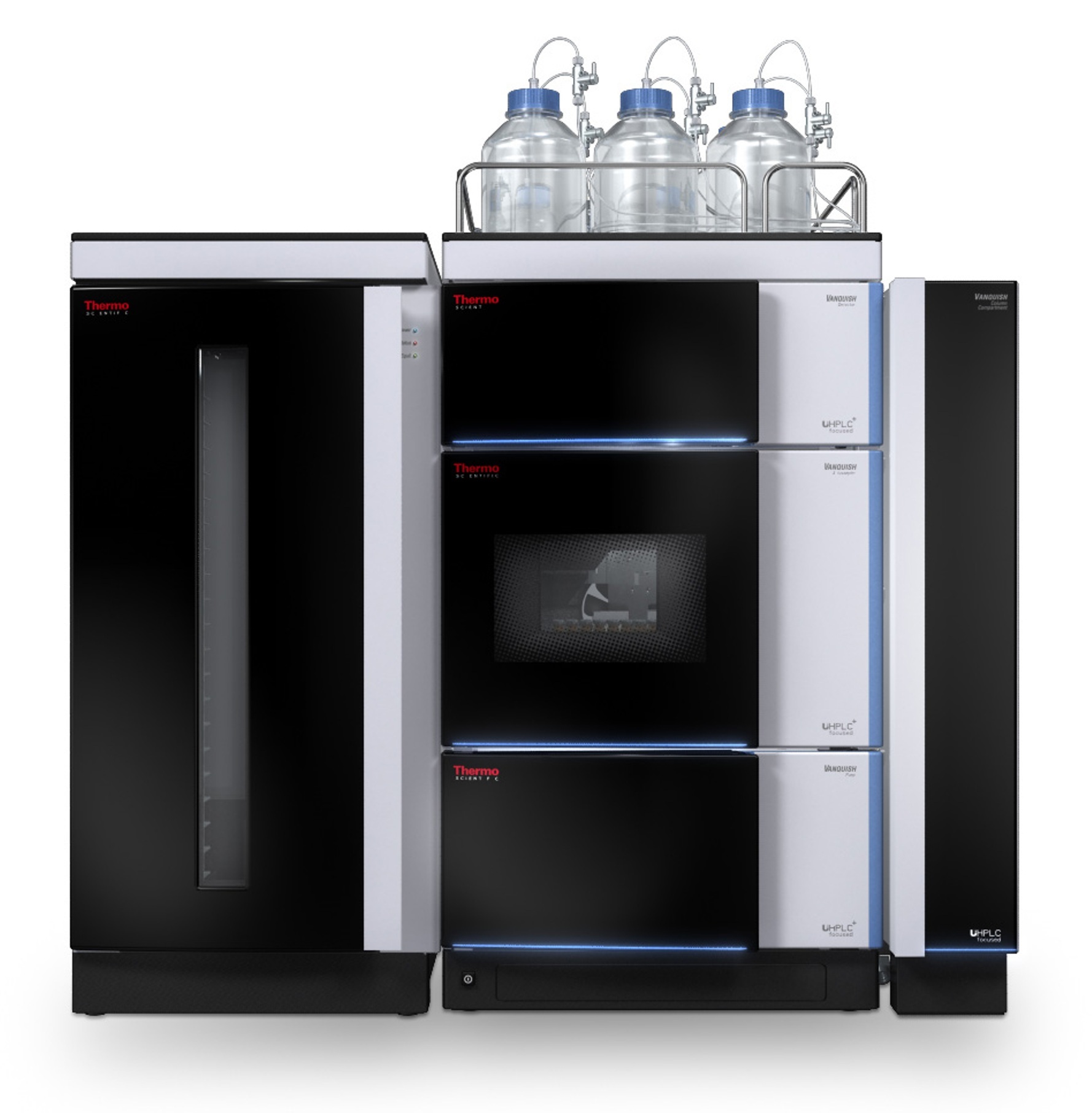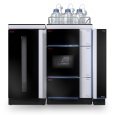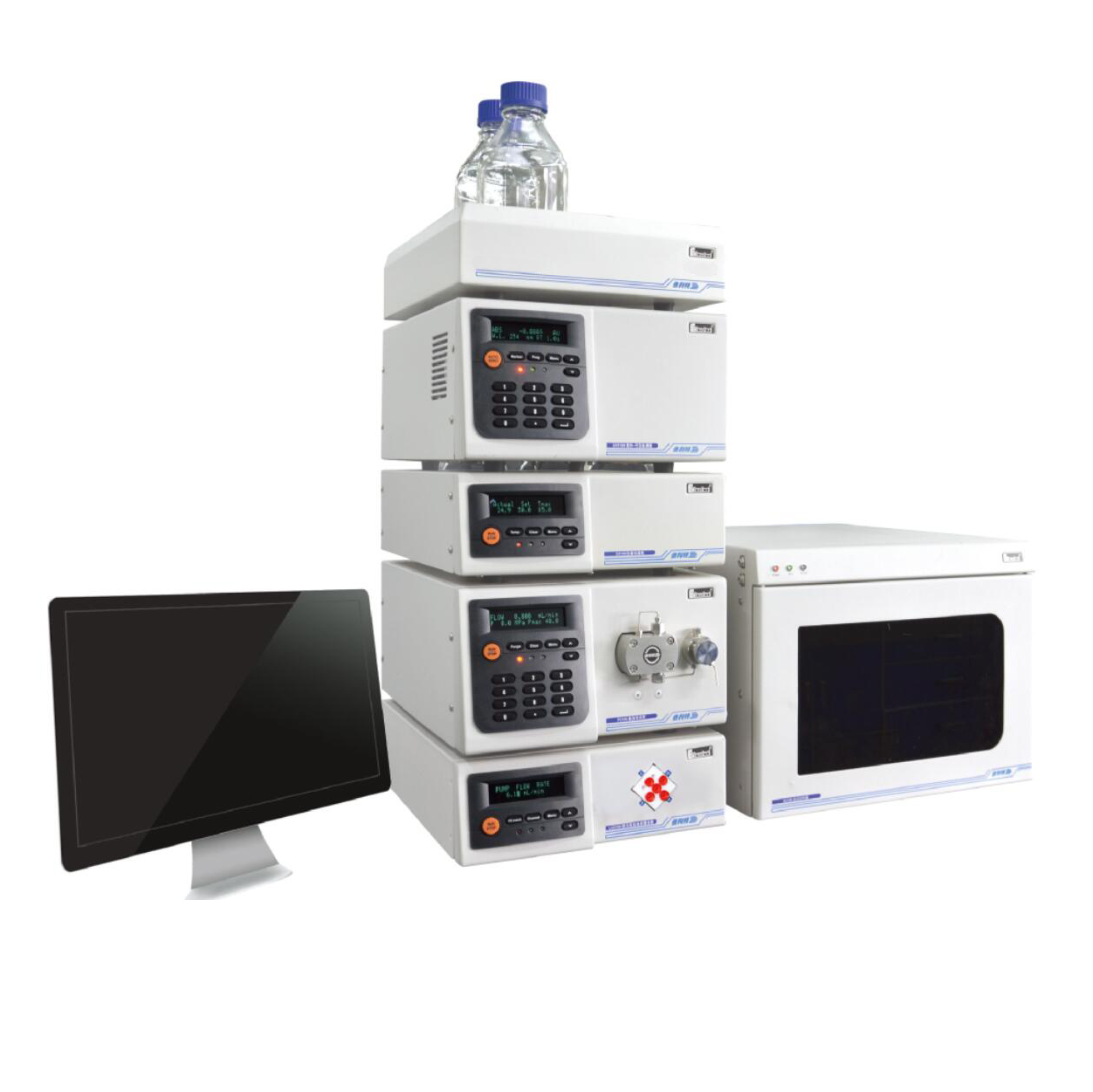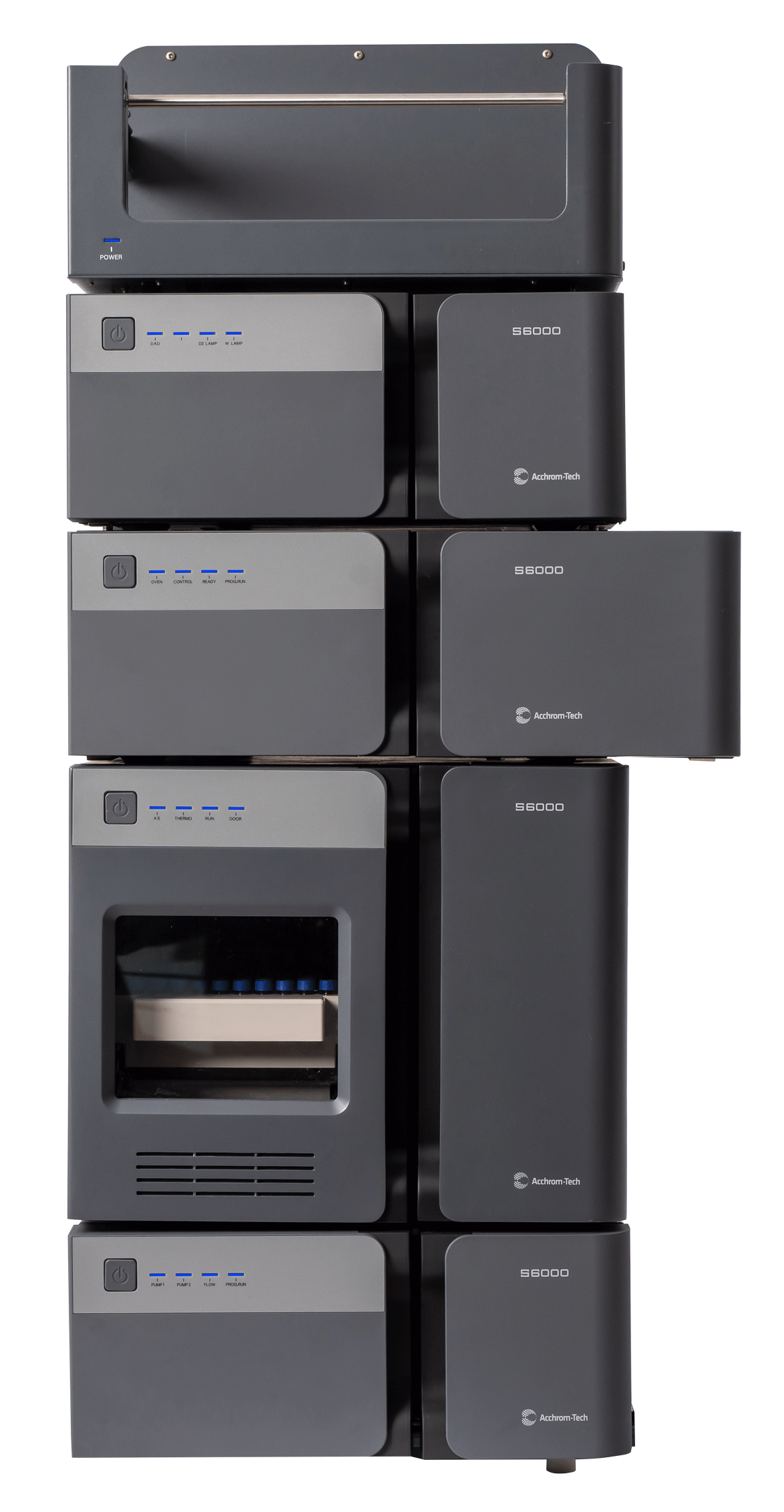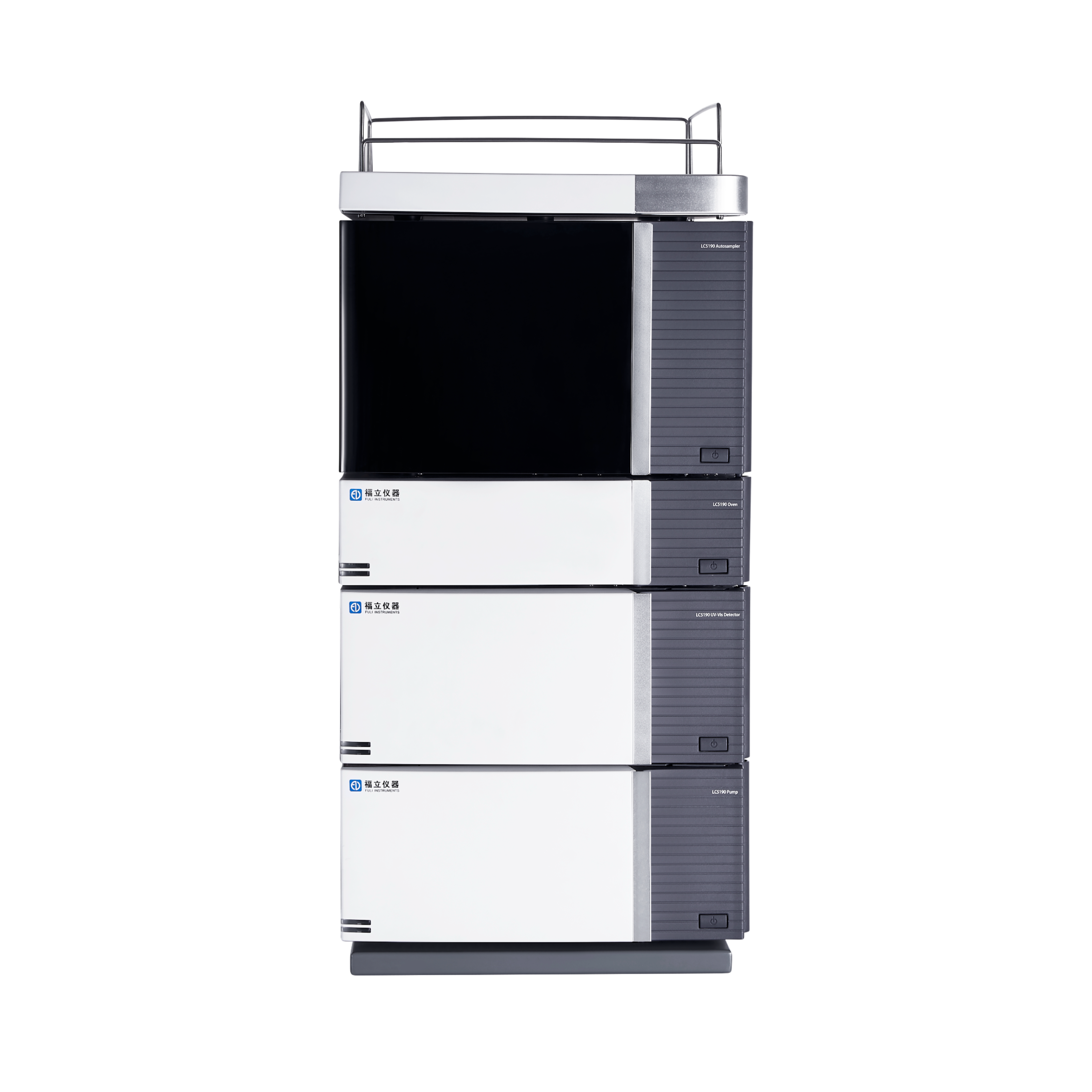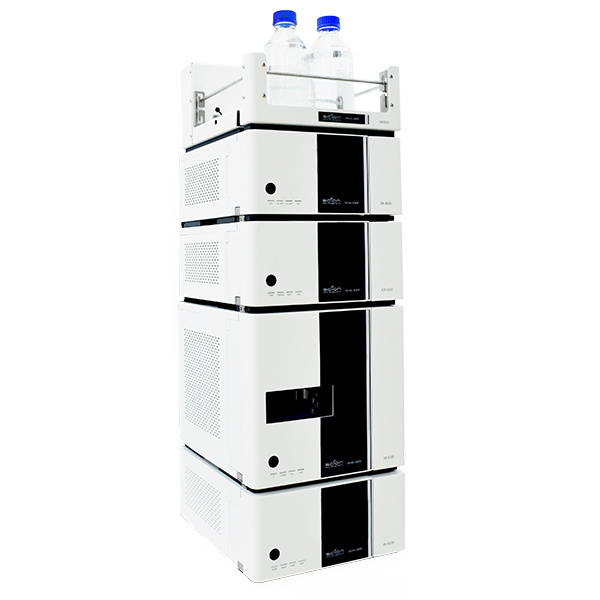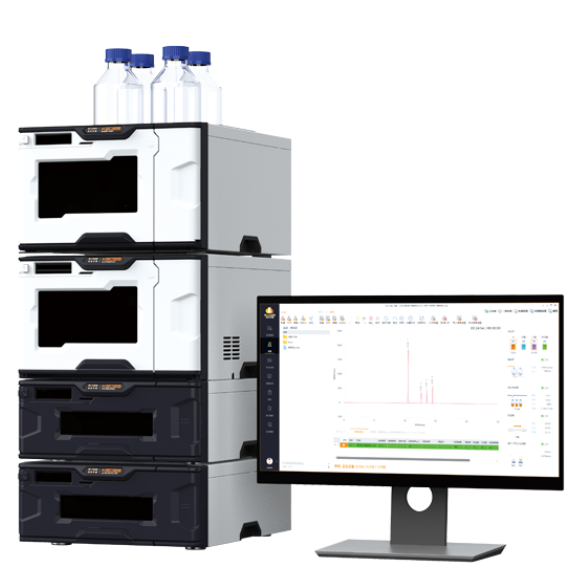方案详情
文
开发一个超高效液相色谱(UHPLC)方法来解决主要的生物胺,并在他们的酸性代谢产物微透析样本收集从大鼠脑使用改进吞吐量Thermo Scientific的戴安?的UltiMate??3000平台的高效液相色谱法。
从前额皮质细胞外液的样品中收集的20分钟持续使用2毫米微透析探针。随后的分析通过进行样品生物胺和酸性代谢产物的含量采用了一块2.4?m的,2.1×100毫米C18柱3000的UltiMate HPLC系统。
一个UHPLC方法在微透析神经化学物质的测量样品被开发。主要的生物胺和酸性代谢物使用的电化学组合的细胞外液样品中检测氧化和还原技术。
方案详情

A Rapid UHPLC Method for the Analysisof Biogenic Amines and Metabolites inMicrodialysis Samples Bruce Bailey and Ian Acworth; Thermo Fisher Scientific, Chelmsford, MA Overview Purpose: To develop an Ultra High Performance Liquid Chromatography (UHPLC)method to resolve the major biogenic amine and their acid metabolites in amicrodialysis sample collected from the rat brain with improved throughput using theThermo Scientific DionexUltiMate3000 HPLC platform. Methods: A sample of extracellular fluid from the prefrontal cortex was collected for a20 minute duration using a 2 mm microdialysis probe. Subsequent analysis of thesample for biogenic amines and acid metabolite content was performed via theUltiMate 3000 HPLC system using a 2.4 um, 2.1×100 mm C18 column. Results: A UHPLC method for the measurement of neurochemicals in microdialysissamples was developed. The major biogenic amines and acid metabolites weredetected from the extracellular fluid sample using a combination of electrochemicaloxidation and reduction techniques. Introduction Evaluating the efficacy of psychotropic pharmaceuticals often involves in-vivo animalexperiments with repeated sampling of brain extracellular fluids for their neurochemicalcontent. By using a microdialysis probe, any changes in the extracellular levels ofbiogenic amines and major metabolites as shown in Figure 1 can be monitored overtime. This offers insights into the psychoactive nature of the drug candidate. Therefore,experimental samples must be repeatedly and accurately analyzed so that anypossible changes of major neuroactive chemicals can be observed with reasonabletemporal resolution. Rapid analytical techniques such as UHPLC with sensitiveelectrochemical detection provide advantages over traditional HPLC assays since thesampling rates can be increased due to shorter run times involved with analysis. The analysis of biogenic amines and major metabolites in these samples is challengingsince these compounds are labile and the levels of monoamines in extracellular fluidsfrom various brain regions are typically quite low due to active reuptake systems andcatabolism. Transport of these compounds by diffusion processes across themicrodialysis probe is limited, so only partial recovery of these chemicals from theextracellular fluid actually occurs. These issues present significant assay sensitivitychallenges. Combining low microliter sample volumes with short collection periodsmeans the assay must be capable of detecting picomolar levels of analytes. By using aspecialized Liquid Chromatography/Electrochemical Detection (LCEC) system,capable of handling the elevated pressures related to UHPLC operation whilemaintaining the full sensitivity requirements of the electrochemical detection tofemtogram levels of detection, assay requirements can be fully satisfied. This workdescribes the analytical conditions for the successful measurement of biogenic aminesand major metabolites in microdialysis samples. FIGURE 1. Structures of A) Biogenic Amines and B) Major Acid Metabolites.A) Biogenic Amines NH2 Methods Liquid Chromatography using an UltiMate 3000 HPLC system:·ISO-3100BM pump·WPS-3000TBRS autosampler·ECD-3000RS electrochemical detectorFlow rate: Isocratic at 0.50 mL/min.Column: Thermo Scientific"HypersilBDS, 2.4 um,2.1x100 mmColumn Temp.:.:·40°C via internal ECD-3000RS column ovenMobile Phase: 75 mM sodium dihydrogen phosphate, monohydrate, 1.7 mM 1-octanesulfonic acid, sodium salt (OSA), 25 uM EDTA, 100 uL/L triethylamine(TEA), 10%acetonitrile, adjust to pH=3.0 with phosphoric acidEC Detector: Thermo Scientific Dionex Model 6011RS cell with porous graphite; E1set at -150 mV, E2 at +250 mV and Model 6041RS cell with glassycarbon set at-325 mV: 12 micron Mylar; Filter:5.0 s, data collection rate20 HzInj. Volume: 20 pL partial loopSample Tray 12°CTemperatureSample Artificial cerebral spinal fluid (aCSF) was collected for 20 minutes at 1Collection: uL/min from a 2 mm microdialysis probe positioned in the prefrontalcortex of the rat brain.Data AnalysisThermo Scientific"Dionex" Chromeleon" Chromatography Data System software, 7.2 Results Relevant neurochemicals include the biogenic amines, dopamine (DA) and serotonin(5HT), and their acid metabolites dihydroxyphenyl acetic acid (DOPAC), 5-hydroxyindoleacetic acid (5HIAA), and homovanillic acid (HVA). The neurochemical output fromspecific brain regions can be monitored using the technique of in-vivo microdialysis.1 Inthis work, a 2 mm microdialysis probe was surgically implanted into the region of theprefrontal cortex of the rat. The extracellular fluid from this brain region was sampled bypumping an artificial cerebral spinal fluid (aCSF) through the probe at 1 uL/min. ThisaCSF was collected for 20 minute periods and then samples were analyzed forneurochemical content using HPLC with sensitive electrochemical detection. One of thechallenges of this analytical technique is due to the high salt content of the aCSF whichcan influence the stability of the electrochemical cell. In order to improve temporalresolution, researchers have attempted to shorten the analysis time of thechromatographic run.However, these attempts have been largely hindered due toissues related to metal capillaries required in UHPLC systems and their promotion ofauto-oxidation of labile compounds such as dopamine. Newer UHPLC columns have been available for some time and can increase samplethroughput due to the shorter chromatographic run times they provide. A majorrequirement to make use of these UHPLC columns is related to the upper pressurelimits of the HPLC system. However, in order to obtain extreme sensitivity, most HPLCsystems combined with ECD use low pressure PEEK capillaries to prevent anysignificant issues related to metal auto-oxidation of these labile compounds. The HPLCsystem described in this work is capable of reaching 620 bar and makes use ofspecialized Thermo ScientificDionexBioViper(MP35N) capillaries that arebiocompatible with labile compounds and electrochemical detection. Thus a UHPLCcolumn packed with 2.4 um particles could be installed. These alterations to the HPLCsystem contributed to the rapid separation of all analytes within 4 minutes as illustratedin Figure 2. The ECD-3000RS electrochemical detector provides unique capabilities of sensitivityand selectivity by utilizing a multiple cell configuration for the analysis of neurochemicalsand acid metabolites from extracellular fluids. The electrochemical cell configurationshown in Figure 3 provides a sensitive arrangement to measure both biogenic aminesand acid metabolites present in a microdialysis sample obtained from the prefrontalcortex. Using the redox configuration shown it was possible to first oxidize allcompounds on the oxidative coulometric channel set at +250 mV and then selectivelyreduce dopamine on the reductive amperometric channel set at -350 mV. It should benoted that in Figure 2 the high salt concentration of the aCSF did contribute to abaseline disturbance of the coulometric cell at the beginning section of thechromatogram. Concentrations of the acid metabolites were relatively high and could beeasily measured at this electrode. Fortunately, the subsequent amperometric electrodeusing reductive potentials was quite stable and provided good sensitivity (femtogramlevels of detection for Dopamine could be obtained as presented in Figure 4). Thisallows the analysis of trace levels of these important neurochemicals in brain regionssuch as the prefrontal cortex. FIGURE 2. Overlay of standard chromatogram of oxidative and subsequentreduction electrodes at +250 and -325 mV, respectively. FIGURE 3. Electrode Arrangement for Redox Cycling of Catechol Compounds. Dual Coulometric cell Amperometric cell / GC Electrode FIGURE 4. Analysis of Dopamine (0.2 pg) on the Amperometric cell using redoxcycle conditions. Calibration data for biogenic amines is shown in Figure 5 and for the acid metabolites asshown in Figure 6. Good response linearity was obtained with correlation coefficientsranging from R2=0.997-0.999 for the biogenic amines and R2=0.992 - 1.0 for the acidmetabolites as shown in Table 1. Baseline stability was a real concern for themeasurement of biogenic amines at low levels since dopamine has a short retention timeand is present at very low levels in microdialysis samples. Dopamine will undergo redoxcycling and by taking advantage of this technique femtogram sensitivity was achieved onthe amperometric cell using the redox cycling configuration (Figure 3). Serotonin does notredox cycle so was measured oxidatively on the second coulometric electrode (LOD 1.5pg). Since the three acid metabolites present in the extracellular fluid are much moreabundant than the biogenic amines these calibration standards were prepared at a 10Xconcentration over the biogenic amine levels. These higher levels are reflected in the datashown in Figure 6. FIGURE 5.Calibration curves ofBiogenic Amine Standards rangingfrom 0.2- 10 pg amounts on-column. FIGURE 6. Calibration curves of Acid TABLE 1. Correlation data for biogenic amines and acid metabolites calibrationcurves. Compound SelectedChannel Number ofPoints CorrelationCoefficient, R2 LinearEquation fmol/ fraction Dopamine(DA) Channel 3.Reductive 3 R²=0.9997 y=0.1102x 137 Serotonin(5HT) Channel 2 Oxidative 3 R2=0.9958 y=0.241x 23 DOPAC Channel 2Oxidative 3 R2=0.9918 y=0.2281x 168 5HIAA Channel 2Oxidative 3 R²=0.9952 y=0.3736x 34 HVA Channel 2Oxidative 3 R2=0.9999 y=0.1916x 11 All five compounds were separated and detected in the microdialysis samples from theprefrontal cortex. Chromatographic data illustrating the detection of dopamine from themicrodialysis sample using the reduction channel at -325 mV is shown in Figure 7.Chromatographic data illustrating the measurement of serotonin and acid metabolitesfrom the microdialysis sample using the oxidation channel at+250 mV is shown in Figure8. The levels indicated in Table 1 are similar to the levels indicated in literaturepublications. Conclusions · The described UHPLC method with subsequent electrochemical detection provided asuitable technique to monitor rapid temporal changes in neurochemical levels inmicrodialysis samples obtained from the prefrontal cortex. · Excellent sensitivity and improved baseline stability were obtained using theelectrochemical redox configuration described in this work. Redox cycling providedbetter stability for the analysis of low levels of dopamine from microdialysis sampleswhen using UHPLC separation methods. FIGURE 7. Redox Detection of Dopamine in a Microdialysis Sample (137 fmol) andStandard. FIGURE 8.Coulometric Detection of Serotonin (23 fmol) and Acid Metabolites in aMicrodialysis Sample and Standards. References Acworth, I.N. and Cunningham, M.L. The Measurement of MonoamineNeurotransmitters in Microdialysis Perfusates Using HPLC-ECD. Methods MolMed. 1999,22,219-236. 2. Amargos-Bosch, M.,Artigas, F. and Adel, A. Effects of acute olanzapine aftersustained fluoxetine on extracellular monoamine levels in the rat medial prefrontalcortex. Eur. J. Pharmacol. 2005,516,235-238. ◎2015 Thermo Fisher Scientific Inc. All rights reserved. ISO is a trademark of the International Standards Organization.All other trademarks are the property of Thermo Fisher Scientific and its subsidiaries. This information is presented as anexample of the capabilities of Thermo Fisher Scientific products. It is not intended to encourage use of these products in anymanners that might infringe the intellectual property rights of others. Specifications, terms and pricing are subject to change.Not all products are available in all countries. Please consult your local sales representative for details. Thermo Fisher Scientific. Africa +43 1 333 50 34 0 Denmark +45 70 23 62 60 Australia +61 3 9757 4300 Europe-Other +431 333 50 34 0 ( Japan + 81 6 6885 1213 K orea + 82 2 3420 8600 ) Austria +43 810 282 206 Finland+358 9 3291 0200 Latin America +1 5616888700 Belgium +32 53 73 42 41 France +331609248 00 Middle East +43 1 333 50 34 0 Brazil +55 11 3731 5140 Germany +49 6103 408 1014 Netherlands +31 76 579 55 55 Canada +1 800 5308447 India +91 22 6742 9494 New Zealand +64 9 980 6700 ( Sunnyvale , C A USA isI S O 9 00 1 C e rtif ie d. I SO90 01 Russia/CIS +431 3 3350 34 0 Singapore + 65 6289 1190Sweden + 46 8556468 00 Switzerland + 4 1 6 1 7 16 7 7 00 Taiwan + 8 86 2 8751 6655 UK/Ireland +44 1442 233555 USA +1800 532 4752 ) China 800 810 5118 (free call domestic) Italy+39 02 950 591 Norway +46 8 556 468 00 400 650 5118 SCIENTIFIC Rapid UHPLC Method for the Analysis of Biogenic Amines and Metabolites in Microdialysis Samples
确定
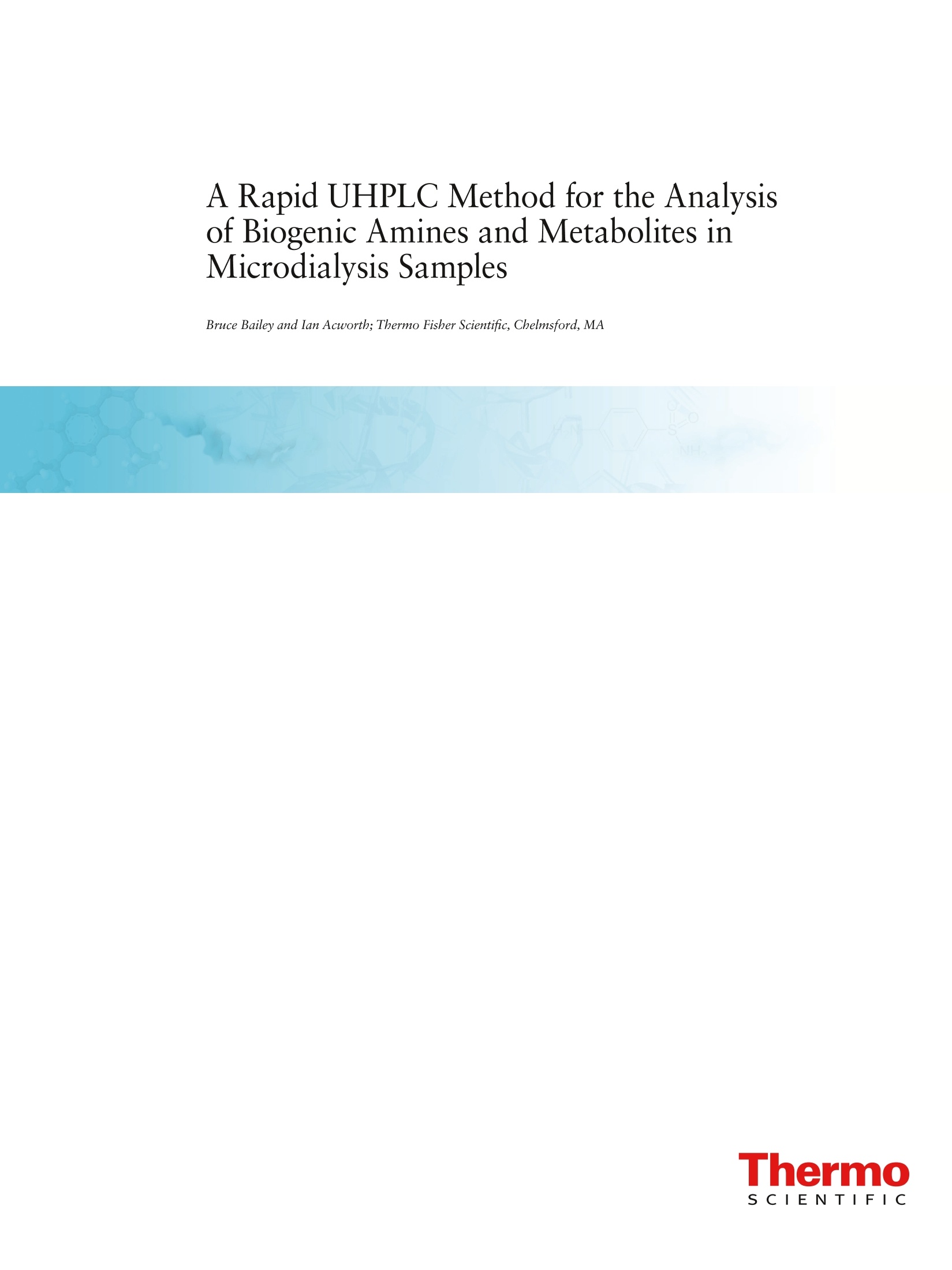
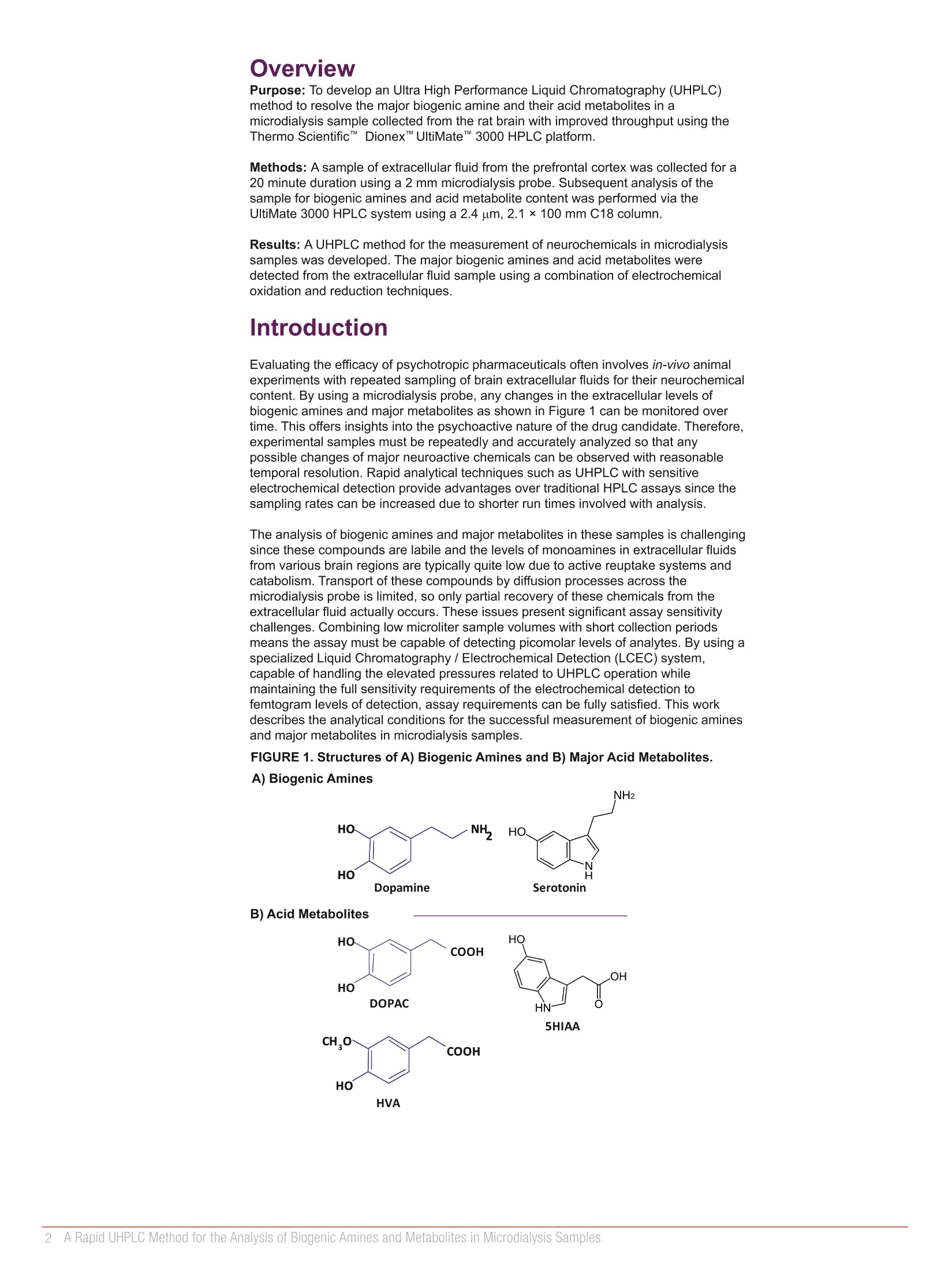
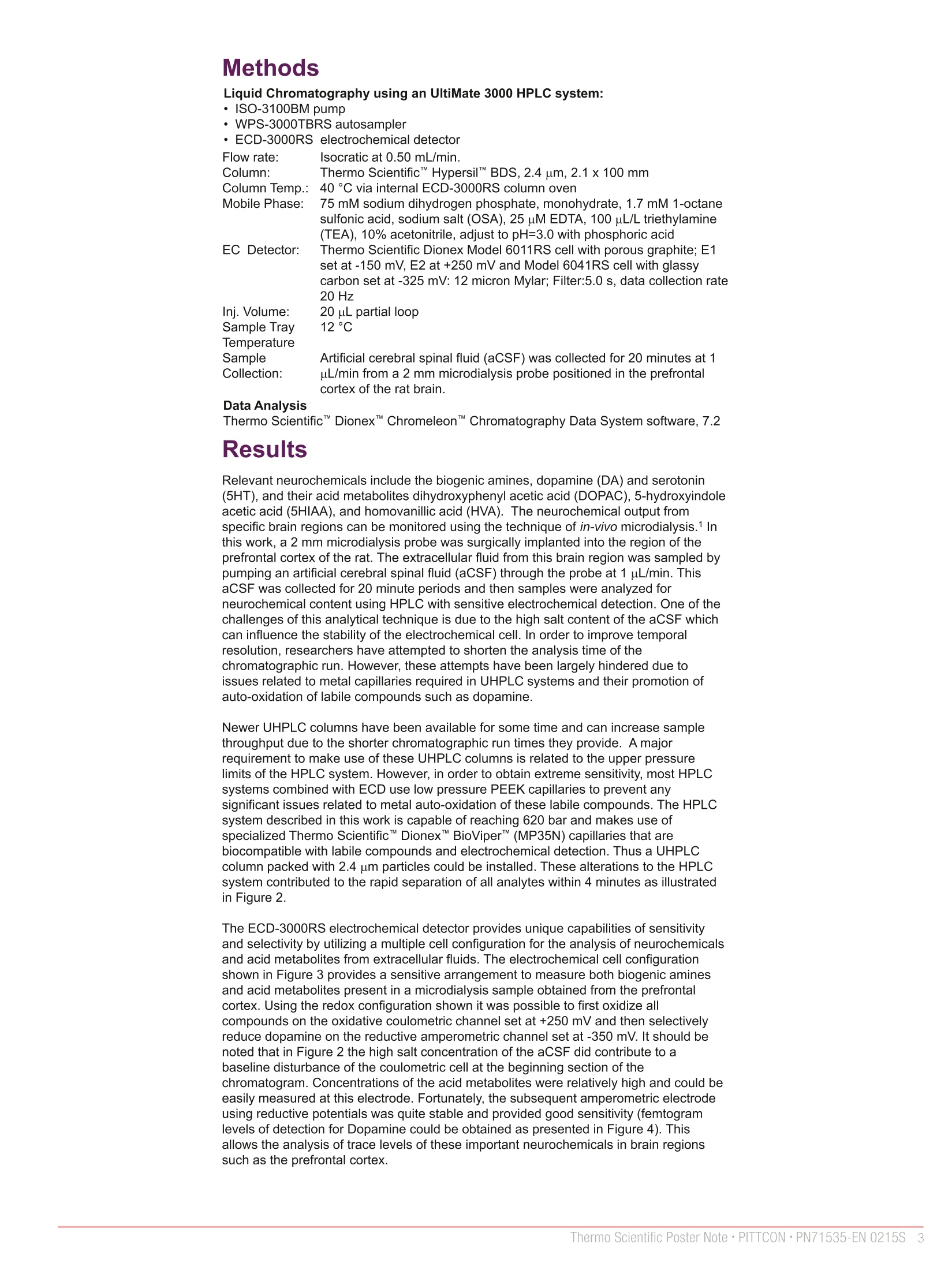


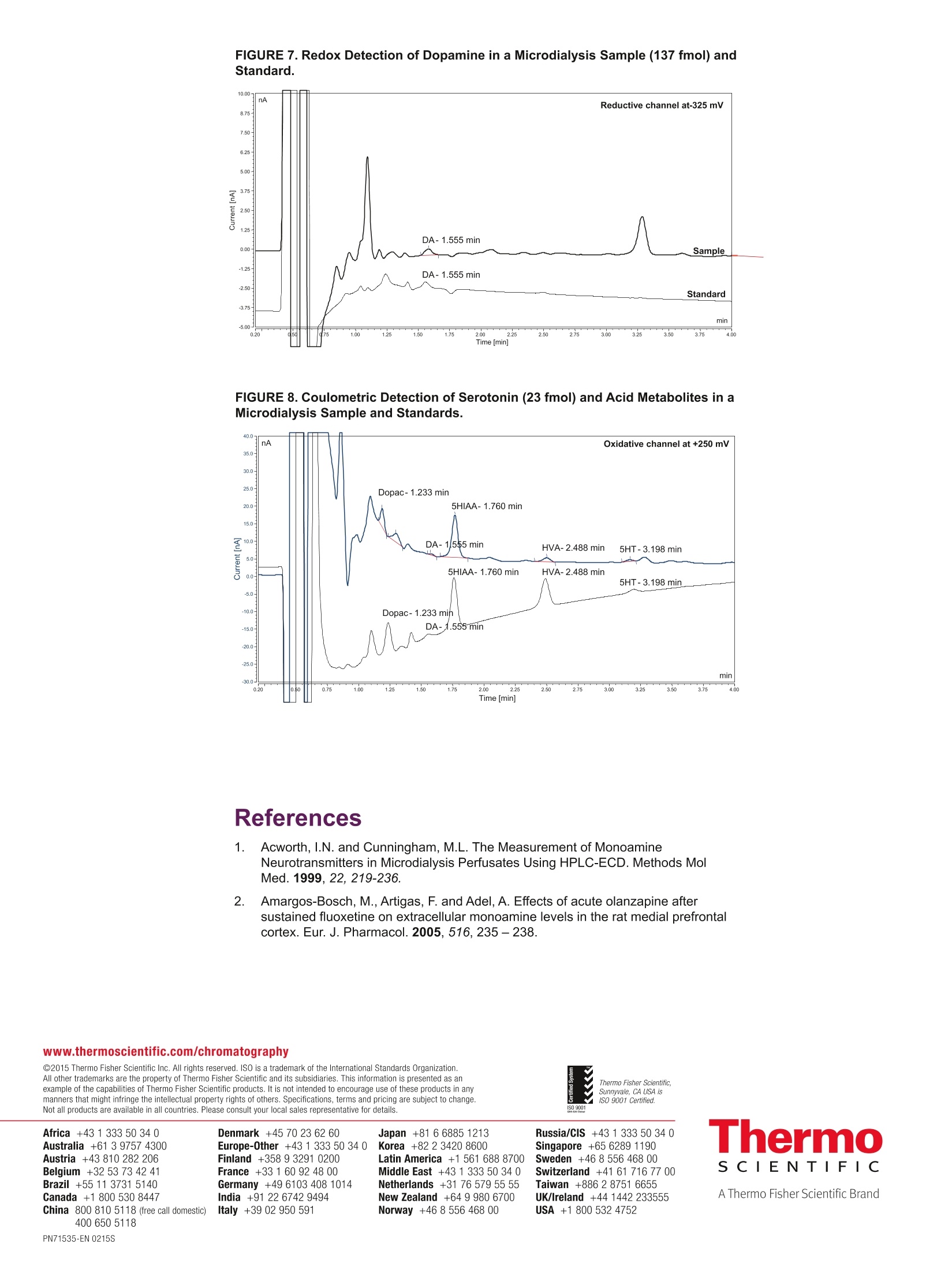
还剩4页未读,是否继续阅读?
赛默飞色谱与质谱为您提供《微透析样品中生物胺和代谢产物检测方案(液相色谱仪)》,该方案主要用于化药新药研发中组学研究检测,参考标准--,《微透析样品中生物胺和代谢产物检测方案(液相色谱仪)》用到的仪器有赛默飞 Vanquish™ UHPLC超高效液相色谱系统
推荐专场
该厂商其他方案
更多

